Themed collection Metal organic frameworks and porous polymers

Beyond structural motifs: the frontier of actinide-containing metal–organic frameworks
This perspective deviates from exclusively focusing on structural features of actinide-containing metal-organic frameworks and pivots towards their prospect as avant-garde materials with an emphasis on their physicochemical properties.
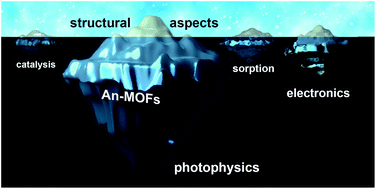
Chem. Sci., 2021,12, 7214-7230
https://doi.org/10.1039/D1SC01827B
Capture of toxic gases in MOFs: SO2, H2S, NH3 and NOx
MOFs are promising candidates for the capture of toxic gases such as SO2, H2S, NH3 and NOx. Understanding the role of different chemical functionalities, within the pores of MOFs, is the key for accomplishing superior captures of these toxic gases.

Chem. Sci., 2021,12, 6772-6799
https://doi.org/10.1039/D1SC01609A
Recent progress on MOF-based optical sensors for VOC sensing
MOF-based optical sensors can achieve volatile organic compound sensing via different mechanisms: colorimetric sensing, luminescent sensing and optical-index modulation sensing.
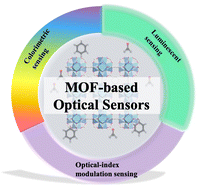
Chem. Sci., 2022,13, 13978-14007
https://doi.org/10.1039/D2SC04314A
Metal–organic frameworks and their derivatives for metal-ion (Li, Na, K and Zn) hybrid capacitors
This review summarizes the progress of metal–organic frameworks and their derivatives as advanced multifunctional platforms for metal-ion hybrid capacitors.

Chem. Sci., 2022,13, 11981-12015
https://doi.org/10.1039/D2SC04012C
Reticular design and crystal structure determination of covalent organic frameworks
This article describes the conceptual basis of rational design in COF chemistry and comprehensively discusses the crystal structure determination of COFs using the topological approach, X-ray diffraction, and 3D electron diffraction.
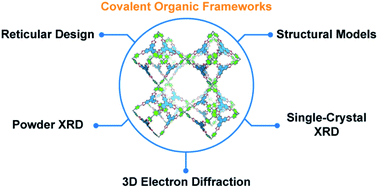
Chem. Sci., 2021,12, 8632-8647
https://doi.org/10.1039/D1SC00738F
Recent progress in metal–organic framework/graphene-derived materials for energy storage and conversion: design, preparation, and application
This review summarizes comprehensively the latest methods of synthesizing MOFs/graphene and their derivatives, and their application in energy storage and conversion with a detailed analysis of the structure–property relationship.
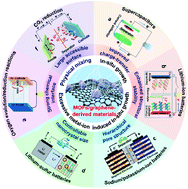
Chem. Sci., 2021,12, 5737-5766
https://doi.org/10.1039/D1SC00095K
2D framework materials for energy applications
In recent years the 2D concept has been transferred from conventional 2D materials to porous 2D framework materials. This minireview takes a closer look onto the preparation of 2D framework materials and their merits for energy applications.
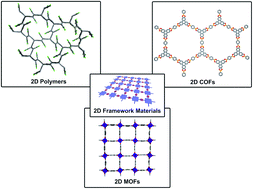
Chem. Sci., 2021,12, 1600-1619
https://doi.org/10.1039/D0SC05889K
Three-dimensional electron diffraction for porous crystalline materials: structural determination and beyond
Three-dimensional electron diffraction is a powerful tool for accurate structure determination of zeolite, MOF, and COF crystals that are too small for X-ray diffraction. By revealing the structural details, the properties of the materials can be understood, and new materials and applications can be designed.
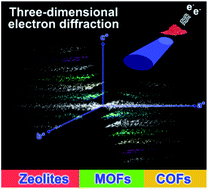
Chem. Sci., 2021,12, 1206-1219
https://doi.org/10.1039/D0SC05731B
Phenothiazine-based covalent organic frameworks with low exciton binding energies for photocatalysis
We report the construction of phenothiazine-based covalent organic frameworks, which exhibited diverse structures, the feasibility of bandgap engineering, and unprecedented ultralow exciton binding energy of ∼50 meV for photocatalytic polymerization.

Chem. Sci., 2022,13, 8679-8685
https://doi.org/10.1039/D2SC02503E
Light-driven molecular motors embedded in covalent organic frameworks
The synthesis of a light-driven molecular motor and its incorporation into a series of imine-based polymers and covalent organic frameworks is presented and criteria for the spectroscopic probing of molecular dynamics in porous solids are discussed.
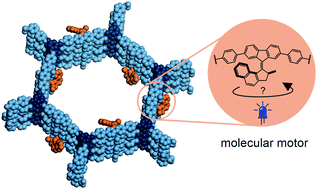
Chem. Sci., 2022,13, 8253-8264
https://doi.org/10.1039/D2SC02282F
Reversible tuning of luminescence and magnetism in a structurally flexible erbium–anilato MOF
Tuning of luminescent and SIM properties is herein reported, in a novel flexible 3D anilato-based ErIII-MOF, displaying reversible shrinkage/expansion from a distorted hexagonal to a 3,6-brickwall rectangular structure.
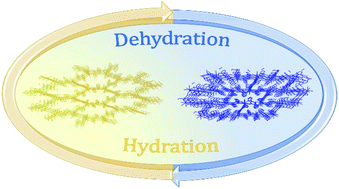
Chem. Sci., 2022,13, 7419-7428
https://doi.org/10.1039/D2SC00769J
Tailoring a robust Al-MOF for trapping C2H6 and C2H2 towards efficient C2H4 purification from quaternary mixtures
Industrially important C2H4 purification from multi-component hydrocarbon mixtures.

Chem. Sci., 2022,13, 7172-7180
https://doi.org/10.1039/D2SC01180H
Linker engineering in metal–organic frameworks for dark photocatalysis
A Ti-based MOF with long-lived Ti3+ can achieve dark photocatalysis. The different groups on the organic linker modulate electron storage ability and the lifetime of Ti3+, significantly regulating dark photocatalytic activity in H2 production.
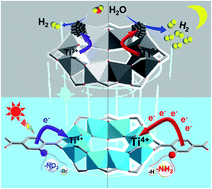
Chem. Sci., 2022,13, 6696-6703
https://doi.org/10.1039/D1SC06785K
Amplification of weak chiral inductions for excellent control over the helical orientation of discrete topologically chiral (M3L2)n polyhedra
Superb control over the helical chirality of highly-entangled (M3L2)n polyhedra (M = Cu(I), Ag(I); n = 2,4,8) was achieved via multiplication of weak chiral inductions by side chains accumulated on the huge polyhedral surfaces.
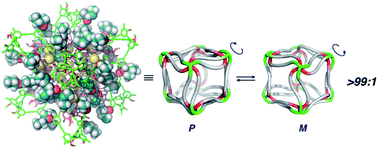
Chem. Sci., 2022,13, 4372-4376
https://doi.org/10.1039/D2SC00111J
Two-dimensional heterostructures built from ultrathin CeO2 nanosheet surface-coordinated and confined metal–organic frameworks with enhanced stability and catalytic performance
A synthetic strategy to prepare 2D heterostructures from ultrathin CeO2 surface-coordinated metal–organic framework was proposed, proving multiple effects of metal-coordinated interactions in 2D heterostructures.

Chem. Sci., 2022,13, 3035-3044
https://doi.org/10.1039/D2SC00308B
A carbonyl-rich covalent organic framework as a high-performance cathode material for aqueous rechargeable zinc-ion batteries
A covalent organic framework (Tp-PTO-COF) with carbonyl active sites was proposed as a novel cathode material and successfully applied in aqueous rechargeable zinc-ion batteries (ZIBs).

Chem. Sci., 2022,13, 2385-2390
https://doi.org/10.1039/D1SC06412F
A BINOL-phosphoric acid and metalloporphyrin derived chiral covalent organic framework for enantioselective α-benzylation of aldehydes
We report a new synthetic approach for the intermolecular α-alkylation of aldehydes with alkyl halides based on a BINOL-phosphate and Cu(II)-porphyrin derived multifunctional CCOF catalyst via visible-light induced photothermal conversion.
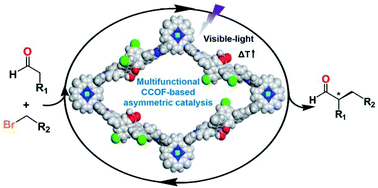
Chem. Sci., 2022,13, 1906-1911
https://doi.org/10.1039/D1SC06045G
Enhancing the photothermal conversion of tetrathiafulvalene-based MOFs by redox doping and plasmon resonance
The photo-response of the redox-active metal–organic framework has been systematically tuned by incorporating plasmonic Ag nanoparticles and tetrathiafulvalene radicals, resulting in efficient near-infrared photothermal conversion materials.
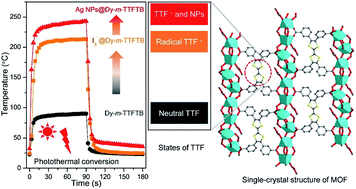
Chem. Sci., 2022,13, 1657-1664
https://doi.org/10.1039/D1SC07001K
Precise fabrication of porous polymer frameworks using rigid polyisocyanides as building blocks: from structural regulation to efficient iodine capture
Macroporous polymer frameworks with a tunable pore size were readily prepared using 4-arm rod-like polymers as building blocks. They showed excellent iodine capture performance with very high efficiency (1 minute) and high capacity (574%).
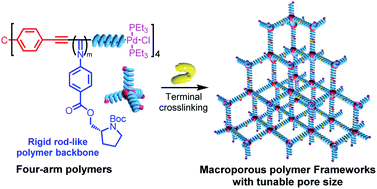
Chem. Sci., 2022,13, 1111-1118
https://doi.org/10.1039/D1SC05361B
A facile and scalable synthetic method for covalent organic nanosheets: ultrasonic polycondensation and photocatalytic degradation of organic pollutants
We develop a strategy to efficiently fabricate ultrathin covalent organic framework nanosheets (CONs) through direct polycondensation of monomers under ultrasonic treatment. The CONs exhibit excellent photocatalytic performance for the degradation of organic pollutants.

Chem. Sci., 2022,13, 1009-1015
https://doi.org/10.1039/D1SC05504F
Design of well-defined shell–core covalent organic frameworks/metal sulfide as an efficient Z-scheme heterojunction for photocatalytic water splitting
A stable Z-scheme with well-defined architecture by in situ growth of COFs on CdS for photocatalytic water splitting is constructed. The T-COF shell can protect the catalytic center of CdS from deactivation and photocorrosion.
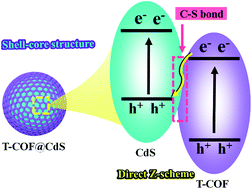
Chem. Sci., 2021,12, 16065-16073
https://doi.org/10.1039/D1SC05893B
Porphyrin-based donor–acceptor COFs as efficient and reusable photocatalysts for PET-RAFT polymerization under broad spectrum excitation
Porphyrin-based donor–acceptor COFs are effective heterogeneous photocatalysts for photoinduced electron transfer-reversible addition–fragmentation chain transfer (PET-RAFT), including for aqueous polymerizations and under red-light excitation.

Chem. Sci., 2021,12, 16092-16099
https://doi.org/10.1039/D1SC05379E
A switchable sensor and scavenger: detection and removal of fluorinated chemical species by a luminescent metal–organic framework
A robust In-MOF, In(tcpp), demonstrates sensitive detection of the fluorinated chemical species F− and PFOA via distinctly different luminescence signal change, and effective adsorption and removal of both species from aqueous solution.
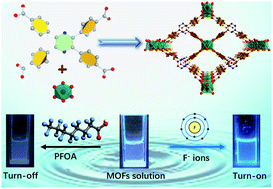
Chem. Sci., 2021,12, 14189-14197
https://doi.org/10.1039/D1SC04070G
Tailoring Lewis/Brønsted acid properties of MOF nodes via hydrothermal and solvothermal synthesis: simple approach with exceptional catalytic implications
The Brønsted/Lewis acid properties of Hf-MOF-808 can be tuned by simply controlling the solvent employed in its synthesis, with direct catalytic implications on the activity and selectivity of organic reactions sensitive to the active site nature.
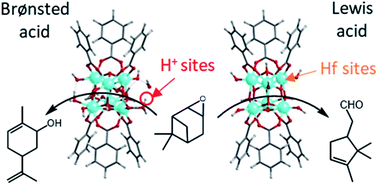
Chem. Sci., 2021,12, 10106-10115
https://doi.org/10.1039/D1SC02833B
Construction of isostructural hydrogen-bonded organic frameworks: limitations and possibilities of pore expansion
The library of isostructural porous frameworks enables a systematic survey to optimize the structure and functionality of porous materials.
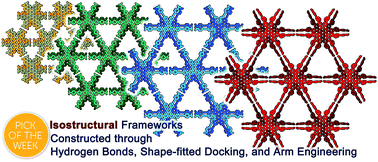
Chem. Sci., 2021,12, 9607-9618
https://doi.org/10.1039/D1SC02690A
Tetrathiafulvalene-based covalent organic frameworks for ultrahigh iodine capture
The synergistic effect of physical and chemical adsorption of iodine in tetrathiafulvalene-based covalent organic frameworks (COFs) has been explored. The iodine adsorption capacity of these materials is higher than other materials reported so far.
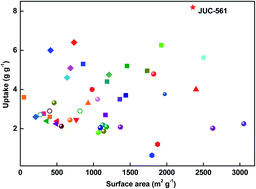
Chem. Sci., 2021,12, 8452-8457
https://doi.org/10.1039/D1SC01742J
Rational incorporation of defects within metal–organic frameworks generates highly active electrocatalytic sites
The allure of metal–organic frameworks (MOFs) in heterogeneous electrocatalysis is that catalytically active sites may be designed a priori with an unparalleled degree of control.
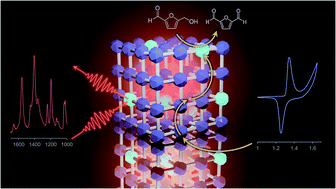
Chem. Sci., 2021,12, 7324-7333
https://doi.org/10.1039/D1SC00573A
Acid-triggered interlayer sliding of two-dimensional copper(I)–organic frameworks: more metal sites for catalysis
The addition of TFA can trigger the interlay sliding of 2D copper(I) organic frameworks prepared by combing the chemistry of MOFs and COFs. The variation of interlay stacking largely affected the porosity, chemical stability and catalytic activities.

Chem. Sci., 2021,12, 6280-6286
https://doi.org/10.1039/D1SC00924A
In vivo oral insulin delivery via covalent organic frameworks
We report the successful use of a gastro-resistant covalent organic framework for in vivo oral delivery of insulin.
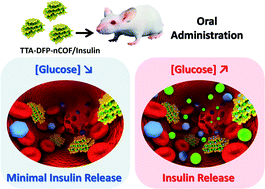
Chem. Sci., 2021,12, 6037-6047
https://doi.org/10.1039/D0SC05328G
Colloidal nano-MOFs nucleate and stabilize ultra-small quantum dots of lead bromide perovskites
We demonstrate a simple and effective host–guest strategy for preparing ultra-small lead bromide perovskite QDs through the use of nano-sized MOFs that function as nucleating and host sites.

Chem. Sci., 2021,12, 6129-6135
https://doi.org/10.1039/D1SC00282A
Proton-conductive coordination polymer glass for solid-state anhydrous proton batteries
Melt-quenched coordination polymer glass shows exclusive H+ conductivity (8.0 × 10−3 S cm−1 at 120 °C, anhydrous) and optimal mechanical properties (42.8 Pa s at 120 °C), enables the operation of an all-solid-state proton battery from RT to 110 °C.
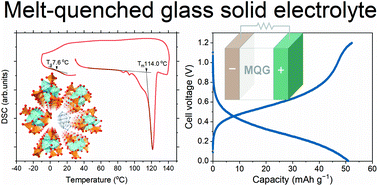
Chem. Sci., 2021,12, 5818-5824
https://doi.org/10.1039/D1SC00392E
Multiplexed and amplified chemiluminescence resonance energy transfer (CRET) detection of genes and microRNAs using dye-loaded hemin/G-quadruplex-modified UiO-66 metal–organic framework nanoparticles
Hemin/G-quadruplex DNAzyme-modified metal–organic framework nanoparticles act as functional hybrids for the catalyzed oxidation of luminol by H2O2, causing chemiluminescence and activation of chemiluminescence resonance energy transfer to the dye loads.
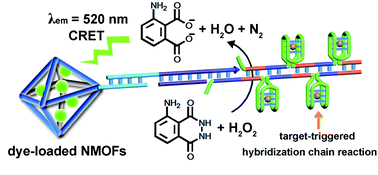
Chem. Sci., 2021,12, 4810-4818
https://doi.org/10.1039/D0SC06744J
Monolayer nanosheets formed by liquid exfoliation of charge-assisted hydrogen-bonded frameworks
We report the liquid-phase ultrasonic exfoliation of two layered hydrogen-bonded frameworks into monolayer, micron-sized, and water-stable nanosheets (HONs) connected purely by hydrogen-bonding interactions.
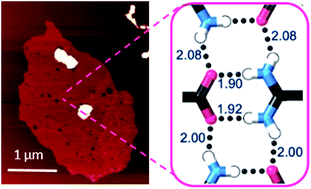
Chem. Sci., 2021,12, 3322-3327
https://doi.org/10.1039/D0SC06906J
Photo-modulated wide-spectrum chromism in Eu3+ and Eu3+/Tb3+ photochromic coordination polymer gels: application in decoding secret information
A lanthanide based photochromic coordination polymer gel (pcCPG) material has been developed which showed photomodulated colour change based on pcFRET and has the potential to be employed for decoding secret information.

Chem. Sci., 2021,12, 2674-2682
https://doi.org/10.1039/D0SC05721E
Guest induced reversible on–off switching of elastic frustration in a 3D spin crossover coordination polymer with room temperature hysteretic behaviour
Reversible switch between a robust bistable two-state room temperature spin crossover (SCO) and its transformation in a four-stepped elastically frustrated SCO due to guest inclusion in a metal–organic Hofmann framework.
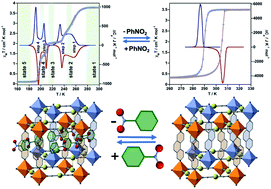
Chem. Sci., 2021,12, 1317-1326
https://doi.org/10.1039/D0SC04420B
About this collection
The broad area of porous materials, including MOFs, COFs, coordination polymers and networks, and porous cages, is at the forefront of significant advances in many areas of chemistry, including gas storage and separation, MOF-based sensors, new photo- and electro-catalysts, and porous materials for batteries. This collection showcases some of the best MOF, COF, and porous materials papers recently published in Chemical Science, from fundamental papers improving our understanding of the structures and design choices in MOFs, to state-of-the-art porous materials for a range of different applications.